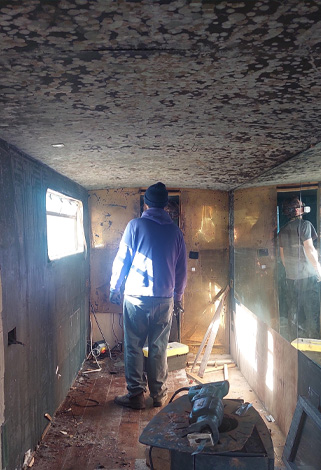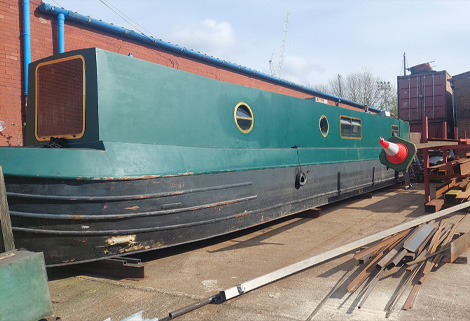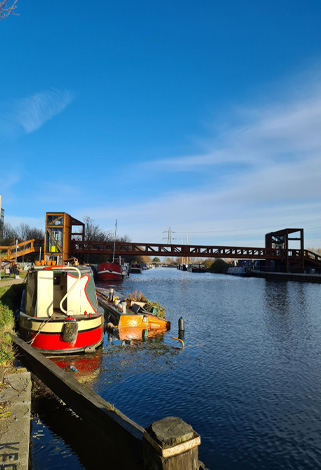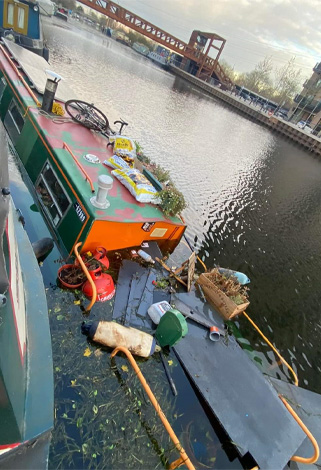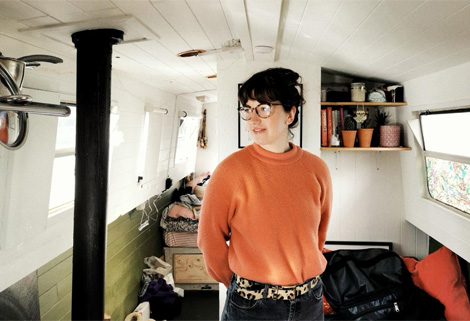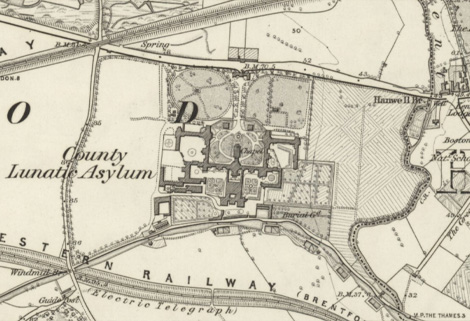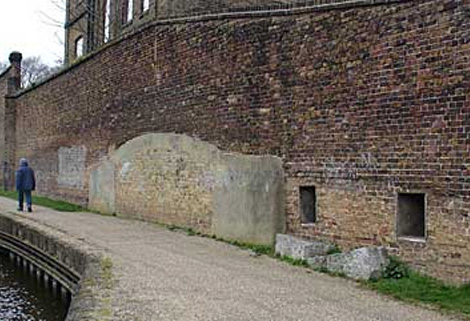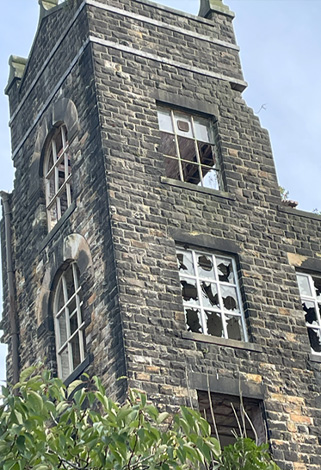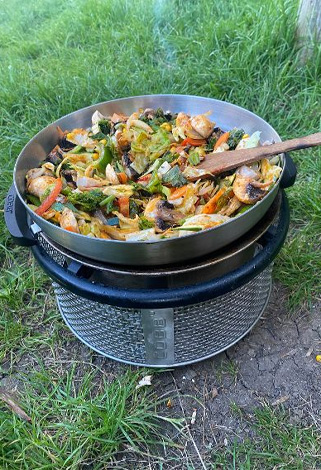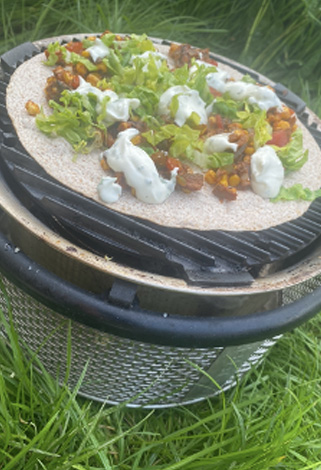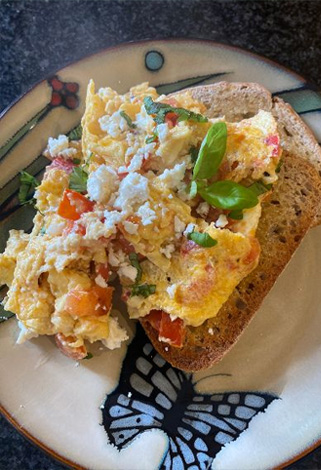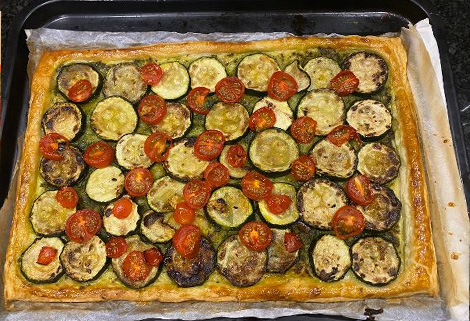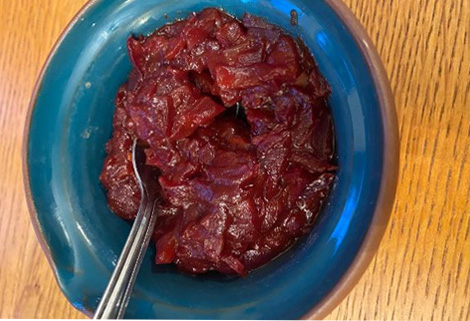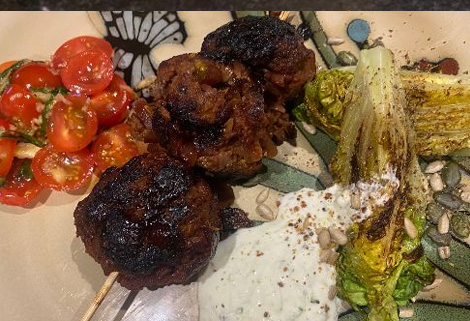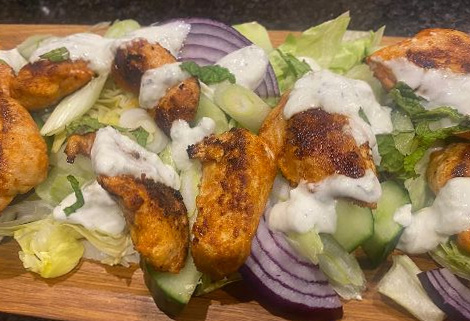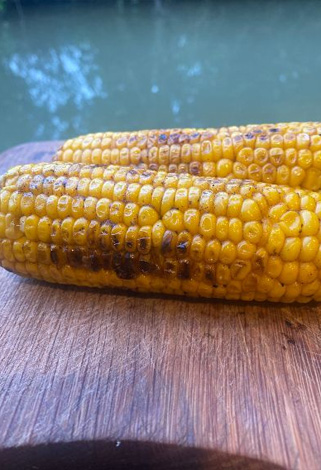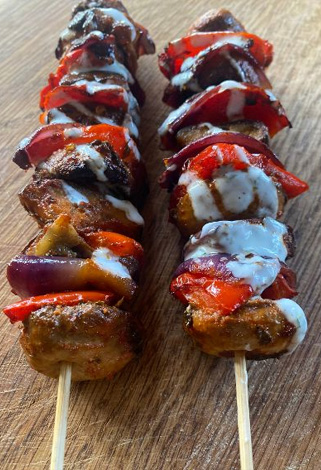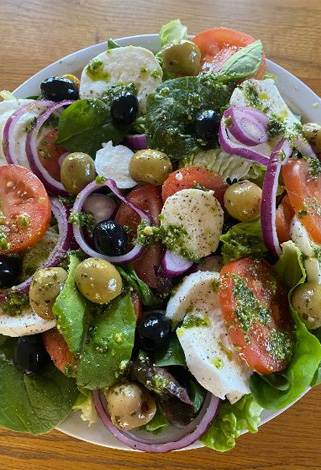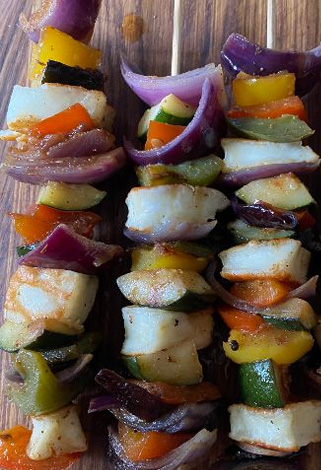PESTO in a jar is a useful store cupboard ingredient to have in and makes a quick salad dressing or marinade for chicken and vegetables with added oil, lemon juice (or cider vinegar) and optional chilli. It’s also handy to stir through a pasta dish, or as a pizza or tart base.
SUMMER PESTO, COURGETTE AND TOMATO TART
Roll out a pack of ready roll puff pasty onto a baking sheet, using the packaging paper as a non-stick sheet. Tidy the edges with a knife to form a neat rectangle, then gently score a line all the way round, about an inch in from the edge cutting all the way the through. Brush a little beaten egg around the border taking care not to spill over the sides otherwise you wont get an even rise. Brush a thin layer of pesto over the base and pop into a hot oven for 5 minutes while you prepare the topping. Slice 1 to 2 courgettes into discs and gently fry in a little oil for a couple minutes each side. Remove the pastry from the oven and arrange the courgette pieces over the top, followed by sliced small tomatoes and salt and pepper. Return to the oven for a further 15 minutes until the pastry edges are golden and crispy. Enjoy warm or cut into squares and eat cold.
When planning to barbecue we often have a plan b, which is usually involves the skillet or griddle pan and cooking over the gas hob inside! My devilled corn on the cob recipe can also be cooked in a hot pan, as can the skewers if they are small enough, and burgers of course.
Yoghurt sauce, tzatziki, hummus, guacamole etc. are all favourites and have been included in previous summer articles. My quick onion relish recipe not only works as an accompaniment but is a good binder for my meatball kebabs. Jalapeno peppers in a jar are a great addition to salsas, homemade burgers and aioli.
LOADED BURGERS WITH JALAPENO
AIOLI works well with any type of burger:
For the aioli simply mix together (or blend in a mini chopper) 1 finely chopped garlic clove, ½ cup mayonnaise, a few sliced jalapenos, add a little juice from the jar to make a thinner sauce.
Slice the burger bun and toast on the inside, then layer the burger up, firstly spread some aioli over the base, followed by a lettuce leaf, slice of tomato, sliced onion ring, cooked burger, slice of cheese, cooked bacon rasher, sliced avocado, finally spread more aioli over the burger bun lid and place over the top!
LENTIL BURGERS 1 tin lentils, drained ½ small red onion and 1 garlic clove, very finely chopped 70g porridge oats, finely blended to fine if you have a mini chopper of food processor 1 tsp chilli flakes or finely chopped fresh chilli ½ tsp ground cumin ¼ tsp turmeric 1 tomato, finely chopped 50 ml natural yoghurt A handful of freshly chopped coriander, mint or parsley if you have it pinch salt and pepper
Start by gently frying the chopped onion and garlic, add the spices and seasoning to combine and then remove from the heat. Whiz the oats in a processor, if you don’t have one you could place them in a strong food bag and crush with a rolling pin, the finer they are the easier it is to shape the burger. Then combine everything together in a bowl and leave for 20 mins. Squeeze the mixture tightly together with your hands to form the burgers, makes about 2 or 3. Double the quantities for more, will freeze uncooked.
TIP For any homemade burgers or meatballs is always good to squeeze very firmly together when shaping to avoid too much moisture and help stick together, don’t use extra lean minced meat, 30% fat content is ideal as the fat helps keep everything together, refrigerate before cooking - if they are too “soft” they fall apart easier. Make sure the grill pan is oiled just before cooking. Finally, don’t be in a hurry to turn them over, be patient and wait for one side to cook, they should only need turning once.
QUICK ONION RELISH
1 or 2 (depending on size) red onions 2 tbsp balsamic vinegar 2 tbsp honey 2 tbsp tomato puree 2 tbsp water Pinch salt and pepper Finely slice and chop the onions and add to a pan with the water and balsamic vinegar, bring to the boil then reduce to a simmer and add the tomato puree, honey and seasoning. Continue to simmer until the onions become soft and caramelised, add a little more water if needed.



 Keats’ description of Autumn brings to mind a rich image and a distinct feeling, with the growing chill in the air, the earthy scent of leaves underfoot and the rich colours of the trees, hedgerows and fields.
Keats’ description of Autumn brings to mind a rich image and a distinct feeling, with the growing chill in the air, the earthy scent of leaves underfoot and the rich colours of the trees, hedgerows and fields.






